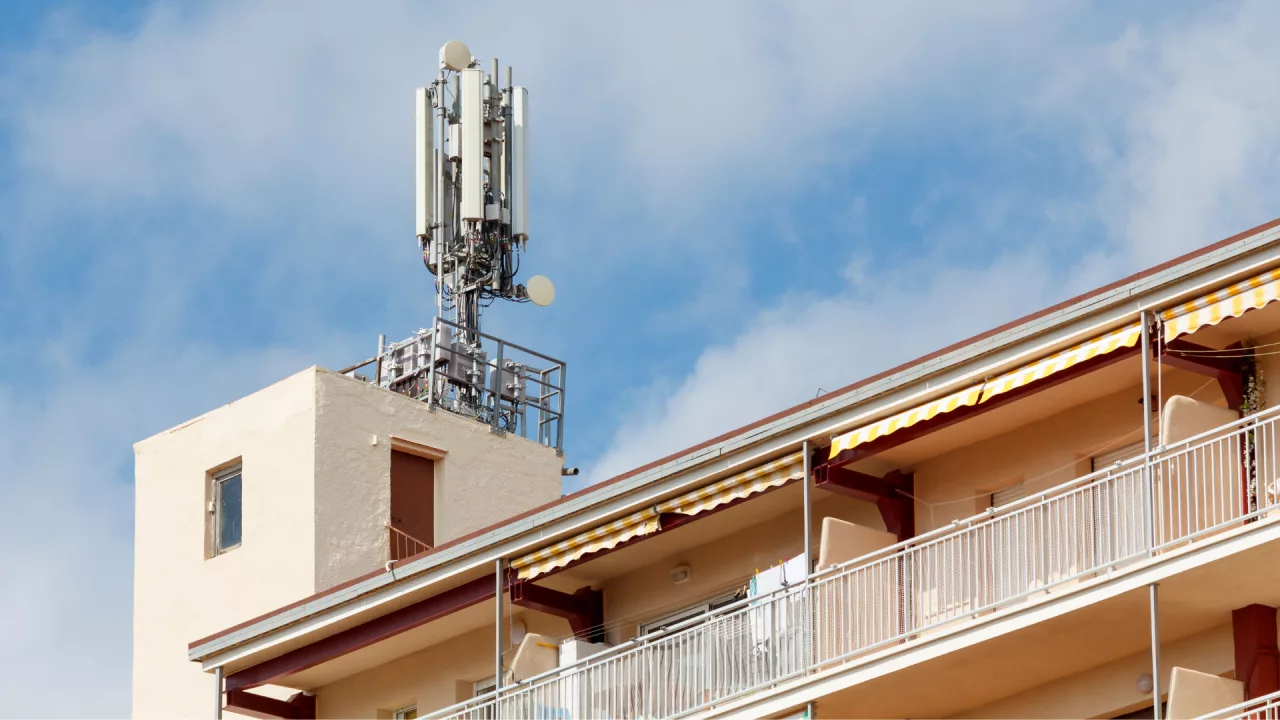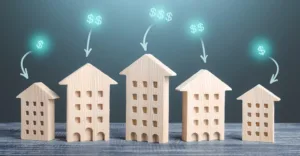We live in a wireless world- and providing the physical real estate for communications service has been a value source of revenue for many real estate investors that we have worked with.
Sometimes this takes the form of ground/ rooftop rent for real estate owners, other times they have sold off the source of income for a cash payout.
Today we are exploring the topic of cell towers and what investors should consider in this space.
What Are Cell Towers?
Cell towers (often called “base stations” or “antennas”) are telecommunications equipment installed on the roofs of tall buildings to improve wireless coverage in urban areas, or large towers in more rural areas.
In more urban areas, instead of building standalone cell towers, telecom companies lease space on existing structures, including apartment buildings, to mount antennas and supporting equipment.
In rural areas, physical towers are built to hold the antennas. When building a cell tower, a ‘fall zone’ needs to surround the tower, which is an easement area around the tower equal to the height. This way if the tower were to be damaged and fall over it would not cause harm to anything surrounding it. Because of this fall zone requirement, and because it is more cost effective, cell antennas are often instead are placed on top of existing buildings.
These installations typically consist of several panel antennas, a radio equipment cabinet, and cabling running to the power supply. The carrier (e.g., AT&T, Verizon, T-Mobile) compensates the property owner with lease payments in exchange for the right to use a portion of the roof.
Financial Benefits for Building Owners
For real estate investors, the primary attraction of a rooftop cell tower lease is the recurring revenue. Lease payments vary based on several factors—location, demand, signal coverage needs, and competing rooftop availability—but generally range between $1,000 and $3,000 per month per carrier. In high-demand urban areas, some leases may exceed $5,000 per month.
These leases typically span 5–10 years, with built-in escalators (often 3% annually), and usually include renewal options. If multiple carriers lease space on the same building, it can result in stacked revenue streams, with minimal additional cost to the property owner.
What Investors Need to Consider
While the income potential is appealing, there are important considerations for investors when evaluating or initiating a rooftop cell tower lease.
1. Structural Integrity and Engineering
New Lease:
- Not all buildings are suitable for antenna installations. Carriers will require a structural analysis to confirm the roof can support the equipment. In some cases, reinforcements may be needed, which can affect installation timelines and costs. Older building or those with complex roof designs may be excluded altogether.
- Zoning and municipal regulations may also affect installation, especially in historic districts or areas with rooftop use restrictions.
More rural areas may also restrict tower development if the land is in farmland preservation, or through zoning regulations.
Existing Lease:
- Make sure that if your roof will need repair or replacement that you as the building owner have full access to do so.
- Any damage to the roof caused by the cell tower use should be covered in their terms of service.
2. Lease Terms and Restrictions
Telecom leases are typically long-term contracts, and some can include perpetual renewal clauses that restrict future use or redevelopment of the rooftop. Investors acquiring a property with an existing lease should review it thoroughly—particularly the termination clauses, rent escalation terms, assignment rights, and access provisions.
Additionally, these leases may include exclusive use clauses that prevent leasing rooftop space to competing carriers or third parties.
- If the lease is coming up at the end of the term, sometimes providers will pay a ‘Expedite’ fee to you to send them back the renewal quickly. Part of the reason for this is to prevent you from ‘shopping’ the lease rate. Make sure you have a fair market price for a lease renewal with yearly escalations.
3. Impact on Property Value
- Cell tower leases may increase a property’s net operating income (NOI) and thereby raise its appraised value.
- They can also complicate a future sale or refinance. Some lenders and buyers view long-term telecom leases as encumbrances, particularly if they contain unfavorable terms or transfer limitations.
- Insurance: If you are negotiating a sale of the tower off to another party, or even a lease, make sure you carefully review the insurance provisions, so the cell tower owner maintains coverage for all property and liability exposure that comes with this use.
- Real Estate Taxes: With a separate tax card, the property taxes associated with the tower should go with the ownership of the tower itself, but make sure that the taxes associated with the real estate is attributed to the user/owner.
4. Sale of Lease Income Stream
Some investors choose to sell their lease income stream to telecom lease buyout firms for a lump-sum payment, often calculated as a multiple of annual rent (typically 8x–12x). This converts future income into immediate capital, which can be used for property improvements or acquisitions. However, doing so transfers control of the lease and may reduce future flexibility.
- Typically, a separate tax ID and property tax card is established for the cell phone antenna/tower when it is installed. These separate tax cards are charged separate real estate taxes. This is beneficial to the owner, as the increased tax liability associated with the lease is tied directly to the cell tower owner who pays the taxes.
- The separate tax card means the ownership of the physical antenna/tower can be sold off, which is commonly is, either direct to a provider (like AA&T, Verizon, etc) or owned by a third-party company that maintains the structure and subleases the space to multiple providers.
- Similar to a mobile home on rented ground, you could either collect rent as the owner of the property under the cell tower, or you could sell off the right to the physical location with a perpetual easement to the tower for access and maintenance.
Strategic Investment Angle
Some savvy investors target mid-rise buildings in urban zones with favorable line-of-sight and limited competition. Others focus on properties near major highways or public venues where demand for wireless coverage is high.
In syndications or multifamily portfolios, rooftop leases can offer a consistent yield enhancer without increasing tenant turnover risk or operating expenses. However, they require proactive management, especially when carriers merge, upgrade equipment, or renegotiate terms.
Conclusion
Rooftop cell phone tower leases can be a smart, passive income generator for taller building owners and real estate investors. They can add value, diversify income, and generate cash flow with relatively low overhead. But they also require careful legal, financial, and engineering review. Like all real estate investments, success lies in the details—and in understanding the balance between short-term income and long-term flexibility.
Many real estate investors we work with appreciate the experience we can draw from to advise on niche aspects of real estate to make sure their returns are maximized. Contact us to discuss your next investment upgrade.
Sources
We draw from experiences with different clients and their lease/purchase terms with real estate encumbered by cell tower leases.





